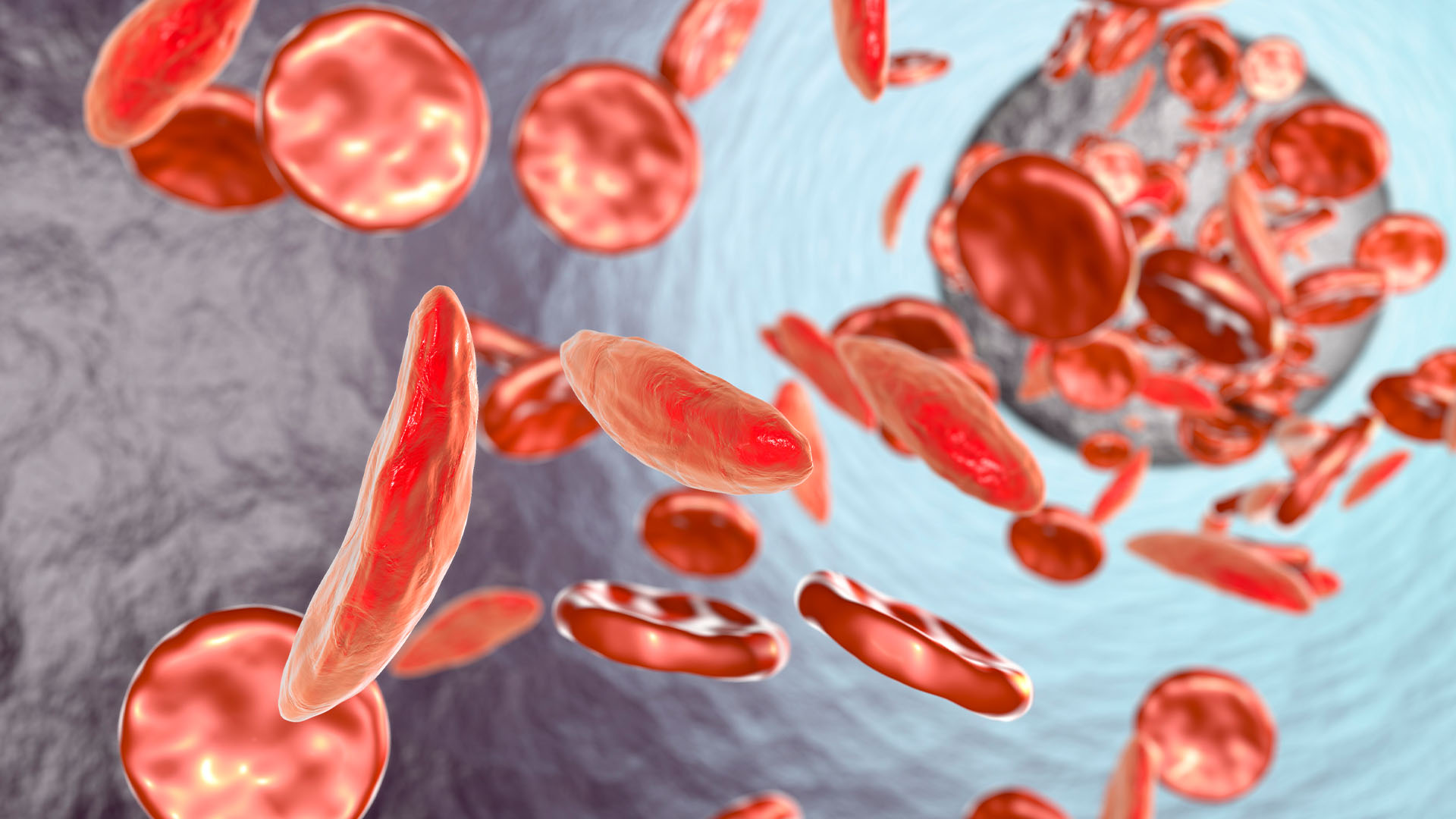Pain crises are a primary feature of sickle cell disease, triggering pain when crescent-shaped blood cells block the flow of oxygen to tissues. Now, a new study finds that these crises may be exacerbated by hormonal shifts during the menstrual cycle.
Sickle cell disease (SCD) is a group of genetic disorders that result in red blood cells, which carry oxygen through the body, having an abnormal, sickle-like shape. This can result in anemia, increased risk of infection and organ damage.
And because the abnormally shaped blood cells can block blood vessels, people with SCD experience episodes of intense pain called vaso-occlusive episodes (VOEs) that can lead to hospitalization. VOEs are the most common type of pain crisis experienced by people with SCD.
It has been well established that females with SCD experience more severe and a greater number of VOEs than males with the disease. Several recent reports suggest that these painful episodes happen more frequently at certain points during the menstrual cycle — namely, during menstruation, when the uterine lining is shed. But the molecular mechanism behind this cyclical pattern is still unknown, making it hard to find treatments that manage the pain.
Now, in a study published April 9 in the journal Blood Vessels, Thrombosis & Hemostasis, researchers at the University of Pennsylvania showed that a marker of inflammation — C-Reactive Protein (CRP) — in the blood increases in females with SCD during the first half of the menstrual cycle and then falls in the latter half.
Related: 1st gene therapies for sickle cell cleared by FDA, including CRISPR treatment
“I am absolutely thrilled that the medical and research community is increasing focus on reproductive health-related morbidity in women with sickle cell disease,” said Dr. Deva Sharma, a physician and hematology and transfusion medicine researcher at Vanderbilt University Medical Center, who was not involved in the study.
“The time has been ripe for decades to extend equity in research and health care advocacy for women and girls with sickle cell disease,” Sharma told Live Science in an email.
The link between menstruation and pain crises
According to Sharma, menstruation-related complications, including VOEs, contribute to substantial suffering and SCD symptoms throughout the lifespans of women with the disease. This morbidity interferes with day-to-day activities, including showering, getting dressed, socializing with friends and going to work. Severe VOEs can also lead to organ damage and potentially life-threatening complications.
People with SCD are in a state of chronic inflammation, in which inflammatory cells and markers of inflammation are always at a higher level in their bodies than those without the disease. That is because the blockage of blood flow during a VOE kills blood cells, which leads to oxidative stress and increased inflammation.
One hallmark of chronic inflammation is that the body makes more CRP, a protein produced by the liver in response to inflammation. CRP levels are higher in SCD at baseline and they get even higher during a VOE. But interestingly, CRP has also been shown to fluctuate throughout the menstrual cycle, even in the general population of people without SCD.
“The menstrual cycle is often overlooked in research and clinical care, but can interact with health in important ways, as we are seeing in SCD,” Dr. Andrea Roe, an assistant professor of obstetrics and gynecology at the University of Pennsylvania and senior author of the study, said in a statement.
The researchers analyzed blood-plasma samples from more than 30 patients to check their CRP levels, as well as the levels of other inflammatory markers, inflammatory cell numbers, and hormone levels. They found that increased CRP levels showed a correlation with the changing levels of sex hormones in women with SCD, and these upticks were far higher than fluctuations seen in women without SCD.
Specifically, they found that CRP levels were higher during the follicular phase, which begins on the first day of a person’s period and ends when they next ovulate, or release an egg. CRP levels fall during the luteal phase — roughly day 15 to day 28 of the cycle — during which the released egg travels to the uterus.
Next steps
This is the first study to show that CRP levels are higher in women with SCD during the follicular phase, giving researchers and clinicians an opportunity to design more specific pain interventions for women with the disease.
Hormonal contraceptives that suppress menstruation, as well as fluctuations in hormones, already exist. As such, these medications could potentially help curb the increased inflammation in women with SCD, the study authors proposed.
“SCD is a really debilitating and painful disease,” lead study author Dr. Jessica Wu, an obstetrics and gynecology physician at the University of Pennsylvania, said in the statement. “The more data we have about how it presents in female patients, the better we can counsel them on anticipating and managing their pain.”
In the future, the researchers hope to expand their sample sizes, while also testing additional markers of SCD against changes in the menstrual cycle.
“Ultimately, the hope is that this kind of work can shape treatment recommendations,” Sharma said. “Given that most individuals with sickle cell disease live in middle- to low-income countries, I look forward to future studies conducted in these settings that will bridge scientific advances globally for the management and prevention of acute vaso-occlusive pain associated with menstruation.”
This article is for informational purposes only and is not meant to offer medical advice.
